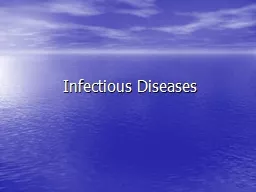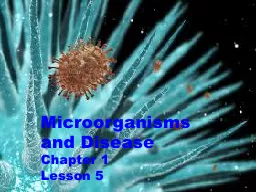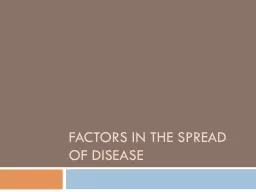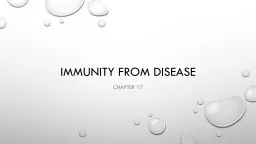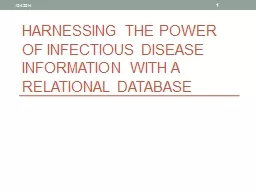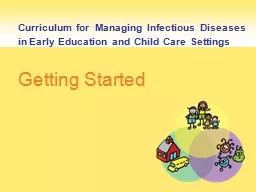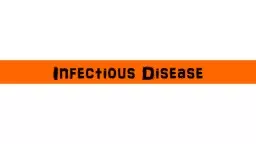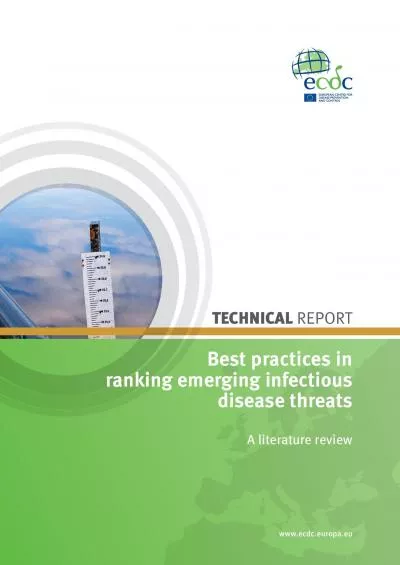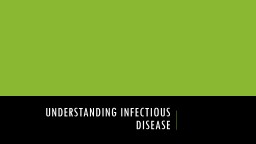PPT-Infectious Diseases Pathogens: Microorganisms that are capable of causing disease
Author : festivehippo | Published Date : 2020-06-17
Infection Results when a pathogen invades and begins growing within the host Disease Results only if and when normal tissue function is impaired The body has defense
Presentation Embed Code
Download Presentation
Download Presentation The PPT/PDF document "Infectious Diseases Pathogens: Microorg..." is the property of its rightful owner. Permission is granted to download and print the materials on this website for personal, non-commercial use only, and to display it on your personal computer provided you do not modify the materials and that you retain all copyright notices contained in the materials. By downloading content from our website, you accept the terms of this agreement.
Infectious Diseases Pathogens: Microorganisms that are capable of causing disease: Transcript
Download Rules Of Document
"Infectious Diseases Pathogens: Microorganisms that are capable of causing disease"The content belongs to its owner. You may download and print it for personal use, without modification, and keep all copyright notices. By downloading, you agree to these terms.
Related Documents

